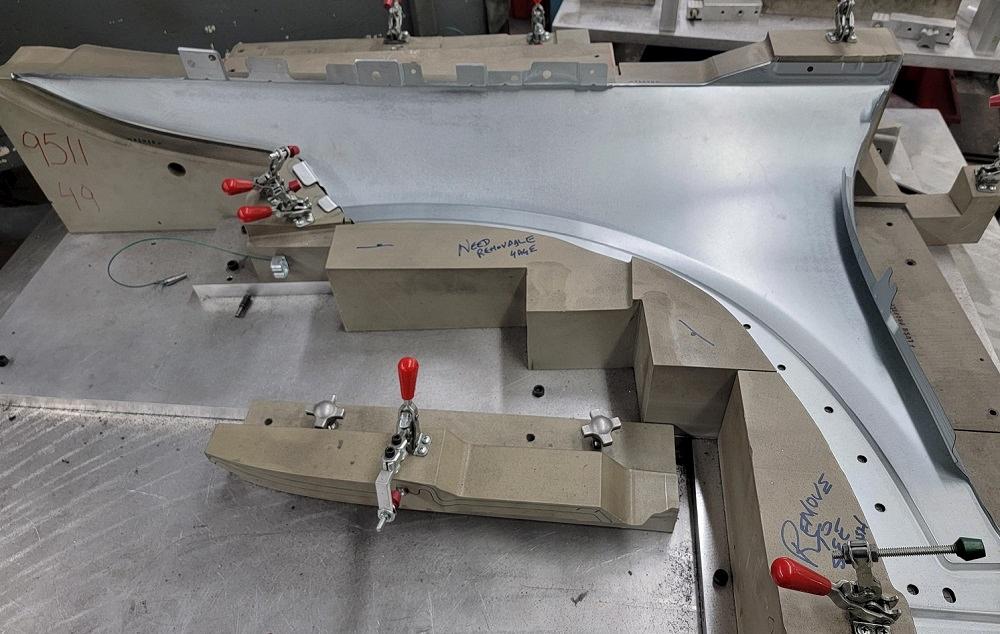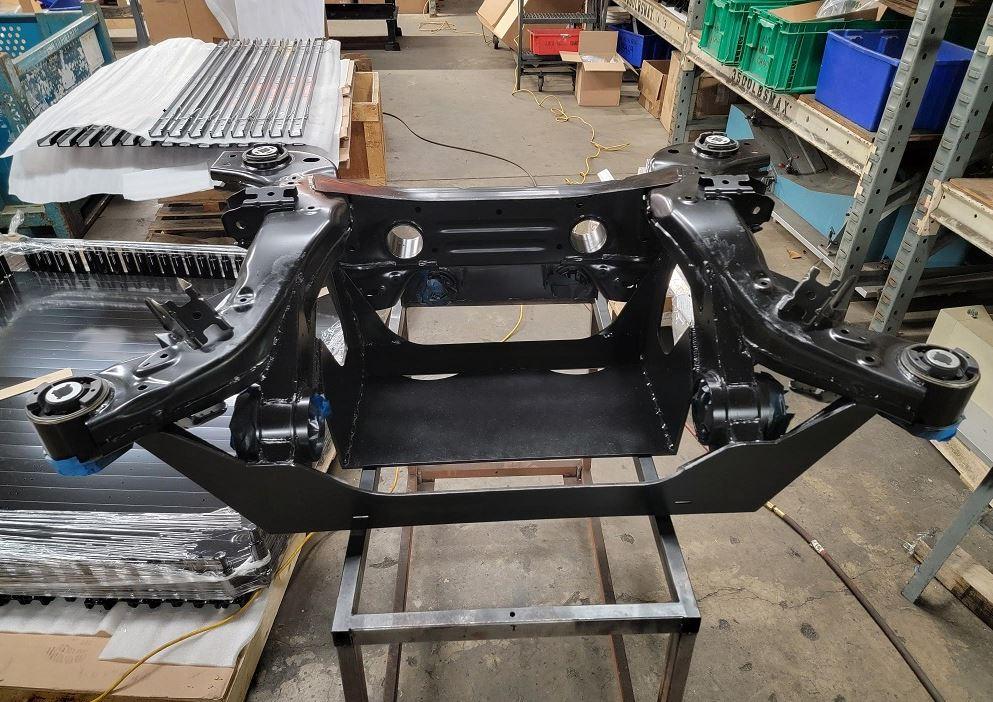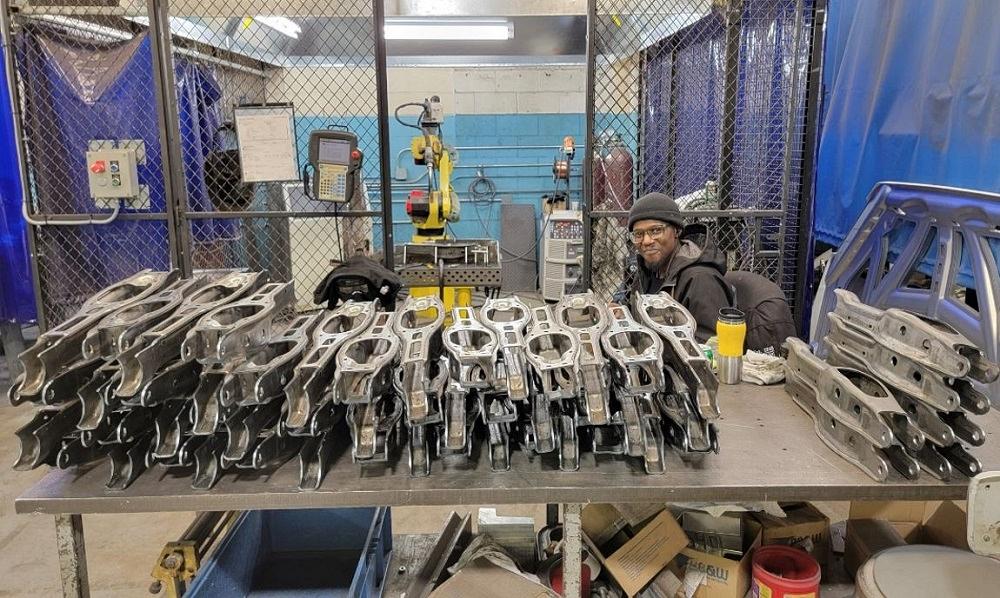Contributing editor
- FMA
- The Fabricator
- FABTECH
- Canadian Metalworking
Categories
- Additive Manufacturing
- Aluminum Welding
- Arc Welding
- Assembly and Joining
- Automation and Robotics
- Bending and Forming
- Consumables
- Cutting and Weld Prep
- Electric Vehicles
- En Español
- Finishing
- Hydroforming
- Laser Cutting
- Laser Welding
- Machining
- Manufacturing Software
- Materials Handling
- Metals/Materials
- Oxyfuel Cutting
- Plasma Cutting
- Power Tools
- Punching and Other Holemaking
- Roll Forming
- Safety
- Sawing
- Shearing
- Shop Management
- Testing and Measuring
- Tube and Pipe Fabrication
- Tube and Pipe Production
- Waterjet Cutting
Industry Directory
Webcasts
Podcasts
FAB 40
Advertise
Subscribe
Account Login
Search
Prototyper proves to be missing link for tooling manufacturer
Prototyping expertise helps production toolmaker land new business
- By Kate Bachman
- February 16, 2023
- Article
- Bending and Forming
Tooling Systems Group, Grand Rapids, Mich., is well-established as a family of stamping dies, mold tooling, assembly systems, steel plate fabrication, machinery sales, and contract machining companies. TSG is an approved Tier 1 supplier of high-volume, production stamping tooling to an enviable assortment of automotive OEMs, including GM, Ford, Toyota, Honda, BMW, FCA, Nissan, Volkswagen, and Mercedes-Benz.
The company began with five diemakers in 1983 and is 600 employees strong today. It has grown its capacity and capabilities by acquisition and now is a 13-company organization today.
The tooling group was encountering situations where it lost out on some projects because it did not have prototyping expertise and capabilities in-house. When it outsourced the prototyping, it was not able to be cost-competitive. Company management searched for a prototype company to join it.
Enter the Dragon
Enter Auto Metal Craft, Oak Park, Mich. The manufacturer has specialized in prototyping and short-run stampings for more than 70 years. Fifty employees perform in-house tooling, laser cutting, press and inspection capabilities, robotic GMAW, and resistance welding. Its biggest customer is GM.
Auto Metal Craft’s passion for the industry and its expertise was fairly well-established. The company has doubled in size over the last five years.
TSG made an offer to purchase the prototype company, and Auto Metal Craft accepted. Company President Kent Woody retired, and Vice President Chuck Karch accepted the president position. The deal closed August 22, 2022.
“TSG was looking to purchase or merge with a prototype/low-volume production supplier. They were missing opportunities because they didn't have their own prototype capabilities,” Karch commented. “We have the knowledge and know-how to make short-run tooling.”
Karch added, “We are still Auto Metal Craft, but we are part of Tooling Systems Group.”
Why Prototyping Is So Important
The fact that a large tooling company recognized that it needed prototyping capabilities really points to the importance of having that capability.
“Some companies have spoken about getting away from prototyping, saying they can replace it with computer simulation. I've heard this for the past 25 years,” Karch said. “That's so far from the truth. They still need these physical parts.”
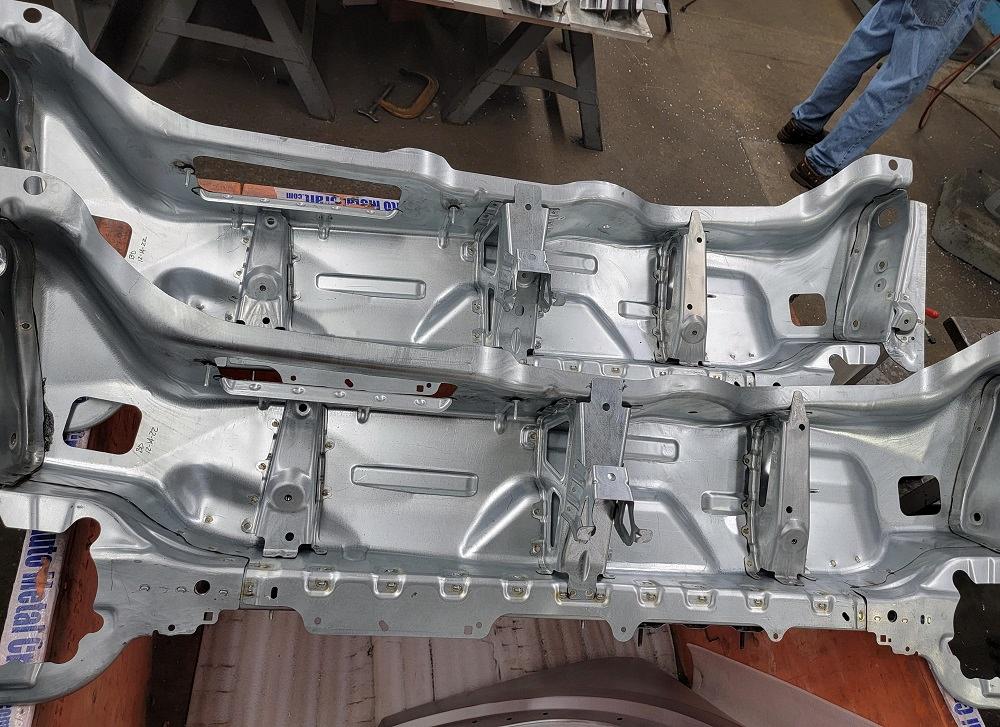
There are lessons learned during validation with a prototype. Alterations can be made more easily using prototype tooling before hard tooling is manufactured.
Automakers buy prototype parts and assemblies from Auto Metal Craft to validate them. They may do crash testing or put them on a testing track. They want to validate a physical vehicle before it goes into production, Karch maintains.
“Plus, there are lessons learned during validation … ‘Oh, this didn't work,’” Karch continued. “Or the production department comes in and says, ‘Hey, we can't make that in production.’ So, they'll soften up some areas, make some alterations, and in most cases they will come back to us during the program and we'll prototype the design changes as well.”
How Prototype Tooling Is Different
Prototype tooling material is usually different; the process of making it is different and in a shorter timeframe; the dies are smaller, and the tool material can be remelted and reused shortly after the satisfactory parts are made, which affects the tooling price. Most significantly, the time to make it is much shorter, Karch relayed.
Hard Tooling. It can take months to design long-run, hard tooling, and 30 weeks to build it. “A transfer die could be 30 ft. long and just very cumbersome. They're constructed of hard steel, such as D2. They can be very expensive, with many small tool parts all put together in large die shoes. Everything is designed into the tool.”
For example, on a transfer line, an automated feeder uncoils the sheet metal and feeds it into the tool to form the part. There may be three or four forming operations and some trimming operations in that same tool. The outer trims and all the holes would likely be pierced in the die. The die may be fitted with cams that form flanges, Karch said. “So, there may be 10 stations in one tool, and at the end it spits out a complete part.”
Once the part is stamped, it has to be validated. “They've got to PPAP [production part approval process] it, so it could be almost a year before everything is up and running perfectly.”
Prototype Tooling. Normally, low-volume and prototype tooling is built differently than hard tooling for high-volume production, Karch said. “It's much less expensive. It's quick. We can develop a form tool for a part in a matter of a few weeks.”
The main reason is that prototype tooling doesn’t have to be made to last, so can be made of a softer metal. “We do use some steel, some T6 aluminum, but usually it’s made from Kirksite. That is an aluminum/zinc-based tooling material. So basically, we design a tool, we have a foundry cast it, we bring it here, and cut it out on one of our high-speed mills.
“Kirksite is a reusable material. Once we stamp the parts, we wait … say a year after the last run, and then we can send it back to the foundry to melt it down. So, the customer doesn't really have to pay for the Kirksite tool material. They pay for the design, the engineering, the cutting, and so forth, but they're not actually paying for tool steel. That’s big savings right there,” Karch said.
Kirksite tool material is a specialty in the Detroit area, according to Karch. “I don't know of another area in the world that uses it. That may be why metro Detroit is where most automotive prototyping and low-volume production tooling takes place.”
Other reasons that prototype tooling is less expensive than hard tooling is that it is much smaller because it doesn’t comprise all of the processes that hard tooling would. Plus, it is designed to be hand-fed and transferred. “So, we've got an operator who hand-applies a steel or aluminum blank into the tool and stamps the part in a manually operated press. The part is not trimmed in the press. We put it in one of our four laser cutting machines to do all the trimming and the holes,” Karch said.
Time Frame. The die design is supplied to Auto Metal Craft, and it builds the tools. “We stamp it. We build the laser fixture internally to laser-cut the trim and holes. We might qualify it in a check fixture. We can build those check fixtures in a couple of days.”
Typically, prototypes are made in six to eight weeks. Even complex, full assembly dies and prototypes can be finished 14 weeks, he said.
“There are times we've had prototypes done in a week and a half, two weeks, three weeks. One project was 14 little brackets. Our customer said, ‘I know it's crazy, but I need them in 10 days.’ We did it,” Karch said.
Short-run Tooling Part Volumes
Typically, the Kirksite tooling will last for a minimum of about 300 parts, depending on the material it's forming. If it’s stamping a softer material, that number may go as high as 1,000.
When Auto Metal Craft has a project with a quantity of 1,200 parts, steel or aluminum tool steel will be used with the same mindset as with Kirksite. It just costs a little more. For the material, instead of casting, the company buys billets of steel, then NC-cuts it. “Nowadays, there's a lot of superhigh-strength sheet materials out there, dual-phase, very hard work materials that are actually harder than the Kirksite, so the tooling wears out quickly. Then we would need to go with steel.”
Local suppliers supply steel burnouts. A burnout is a thick chunk of steel that has been cut with a flame cutter to burn them out of a big plate. “We don’t have to buy the whole plate. It could be 18, 20 in. thick. We CNC-cut them; add our hold-downs onto the sidewalls, and we're able to put that in the same press as we run the Kirksite,” Karch said.
The burnouts have only a one- or two-week lead time, so that is much faster too. “On a medium-sized part, we could build a Kirksite die and have the first stampings in five weeks; a steel die might take eight weeks,” Karch said.
The company is just building a small form die, and without all the trim tooling because parts are laser trimmed.
“A couple of days after we laser-cut our first part, we have a stamping, and can do a quality check. It's just a much faster process. There's still some trial and error, some development, but it’s just still much quicker than they can get stampings from hard dies.
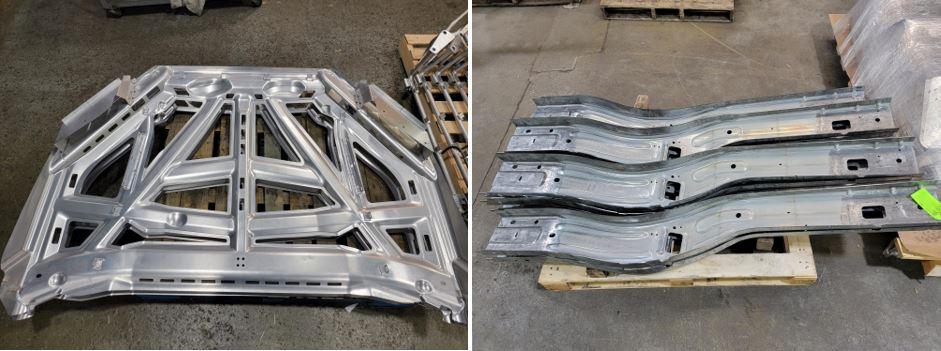
Automakers buy prototype parts and assemblies from Auto Metal Craft to validate them. They may do crash testing or put them on a testing track. They want to validate a physical vehicle before it goes into production.
“But we're not making half a million stampings. What we're building is not meant to last,” Karch said.
EV Transition Heightens Prototype Need
With the auto industry’s transition to electric vehicles, more tooling projects required more prototyping to test out new designs, according to Karch. He said that Auto Metal Craft has been doing a lot of prototypes for electric vehicles recently. “We’ve seen a lot of EV activity, especially the past year. We've done several battery trays here. The first battery tray prototypes we did were for the hybrid Chevy Volt, 12, 15 years ago.”
The manufacturer prototyped around 300 assemblies—not just the stampings, but assemblies for that vehicle, Karch said.
“A lot of newer, startup electric vehicle companies now want short-run, small-volume stampings. That's where the low-volume work comes in. Early on, they really don’t know what their quantities are going to be.”
The company just finished a big project for a Tier 2 supplier of a new delivery van.
“We’ve been doing more prototyping than I've seen in the past. It's accelerated. So, we build the first parts, then they make changes, and then more changes and more changes. We end up running hundreds of parts.
“I think we're seeing more assembles and more battery trays. They’re usually steel and or aluminum. I'm currently quoting aluminum extrusions, stampings, and some castings for a direct supplier to an American manufacturer of an electric powertrain, Lightning eMotors.
“Many of our customers come to us because they're trying to rush to production. They're trying to get their products to production quicker, which means they've got to prototype quickly,” Karch said.
How the Auto Metal Craft-TSG Merger is Co-beneficial
The merging of Auto Metal Craft into TSG has already shown reciprocal benefits.
TSG no longer has to miss out on some projects because of a lack of prototyping capabilities. It supplies everything from the start of a project at the prototyping stage and follows through with production tooling on the same project. “Now they can say, ‘We can supply you with a one-off prototype or a 100-piece run; or if you need a 500,000-piece run, we also have the capability. Now we can do the prototyping for you and then build the hard dies for that same product.’ So it just gave them a broader spectrum of capabilities and another avenue to increase their sales,” Karch said.
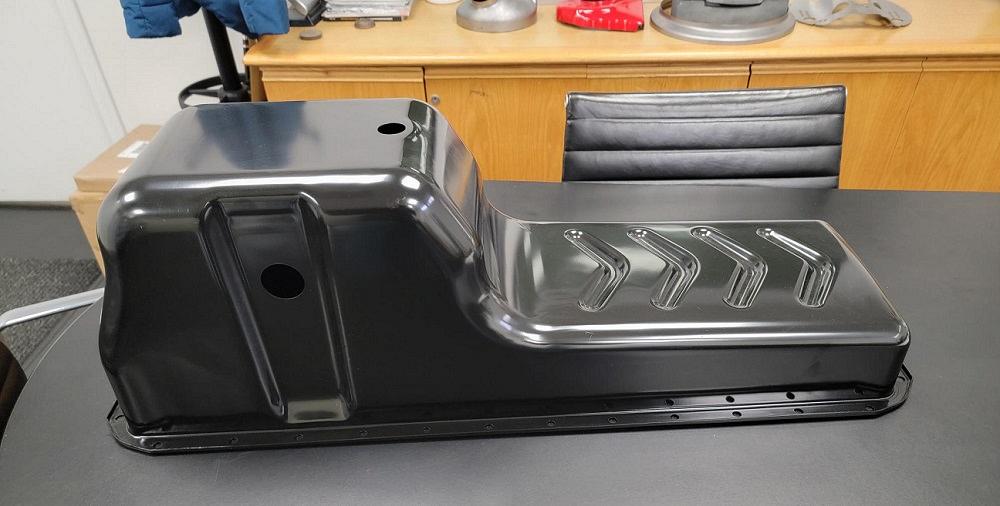
A prototype stamping shows where certain design features, such as sharp corners, might not be manufacturable.
TSG helps Auto Metal Craft in institutional ways. TSG has deeper wells to fund capital equipment investments. It also has simulation programs that Auto Metal Craft did not.
Because TSG has an HR staff, that helps Auto Metal Craft with workforce woes. “One problem we had is finding the manpower, the talent to work in this industry. It is getting harder and harder. At least 90% of everyone who works here has prototype sheet metal experience.
“The intention is to continue growing with TSG, for TSG to continue growing with us, and to be in a position to compete with some of the really big prototype companies,” Karch added.
About the Author

Kate Bachman
815-381-1302
Kate Bachman is a contributing editor for The FABRICATOR editor. Bachman has more than 20 years of experience as a writer and editor in the manufacturing and other industries.
Related Companies
subscribe now

The Fabricator is North America's leading magazine for the metal forming and fabricating industry. The magazine delivers the news, technical articles, and case histories that enable fabricators to do their jobs more efficiently. The Fabricator has served the industry since 1970.
start your free subscription- Stay connected from anywhere

Easily access valuable industry resources now with full access to the digital edition of The Fabricator.

Easily access valuable industry resources now with full access to the digital edition of The Welder.

Easily access valuable industry resources now with full access to the digital edition of The Tube and Pipe Journal.
- Podcasting
- Podcast:
- The Fabricator Podcast
- Published:
- 04/16/2024
- Running Time:
- 63:29
In this episode of The Fabricator Podcast, Caleb Chamberlain, co-founder and CEO of OSH Cut, discusses his company’s...
- Trending Articles
Capturing, recording equipment inspection data for FMEA

Tips for creating sheet metal tubes with perforations

Are two heads better than one in fiber laser cutting?

Supporting the metal fabricating industry through FMA

Hypertherm Associates implements Rapyuta Robotics AMRs in warehouse

- Industry Events
16th Annual Safety Conference
- April 30 - May 1, 2024
- Elgin,
Pipe and Tube Conference
- May 21 - 22, 2024
- Omaha, NE
World-Class Roll Forming Workshop
- June 5 - 6, 2024
- Louisville, KY
Advanced Laser Application Workshop
- June 25 - 27, 2024
- Novi, MI
























